- 대부분의 분만부들은 “통증이 없는 진통도 없고, 진통이 없는 분만도 없다”고 생각하기 때문에 진통에서 오는 통증을 그런 대로 잘 겪으면서 자연 분만을 한다.
- 그렇지만, 일부의 분만부는 진통이 오고 통증이 생기면 당황하고 그 통증을 잘 참지 못한다. 어떤 분만부들은 진통에서 오는 통증을 도저히 참을 수가 없어서 그 통증을 진통제로 경감시켜 달라고 요구하기도 하고 때로는 마취하고 분만하게 해달라고 의사에 요구한다.
- 분만할 때 진통을 경감하기 위해 쓸 수 있는 마취나 진통제에는 분만부와 태아에게 해가 전혀되지 않는 것이 없다. 또 진통으로 오는 통증을 완전히 제거할 수 있는 진통제나 마취제도 없다.
- 사실상 분만으로 생기는 진통을 경감시키기 위해또는제거하기 위해 쓸 수 있는 이상적인 진통제나 마취제는 아직까지 없다. 이런 이유로 마취제나 진통제를 쓰고 분만을 할 계획이면 분만부와 아기에 생길 수 있는 해로운 점은 무엇이고 이로운 점은 무엇인지 잘 알아보고 분만 전 어떤 방법으로 분만 통증을 덜어볼까 의사와 상담해서 결정해야 한다.
- 임신 분만을 잘 이해하고 분만 전 임신 분만 교육을 받고 남편의 사려 깊은 이해를 하면서 분만하면 통증이 훨씬 덜 할 수 있다.
- 진통제도 마취제도 쓰지 않고 분만 체위변경, 긴장 푸는 방법, 분만 호흡 방법, 더운 찜질과 찬찜질, 침 등 여러 가지 방법으로 진통을 경감시키도 한다.
- 다음은 진통으로 생기는 통증을 최소 한도로 경감시킬 수 있는 진통제와 마취제에 대하여 설명하기로 한다.

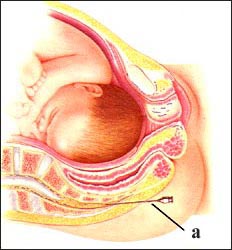
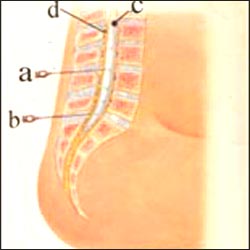
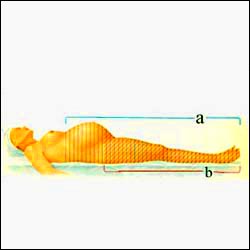
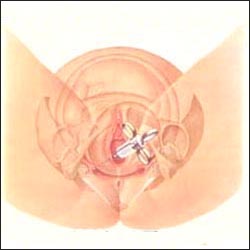
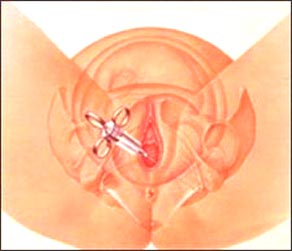
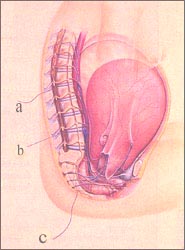
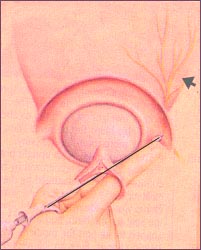
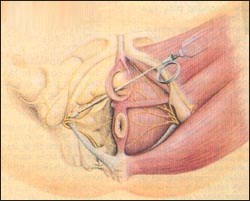
Analgesic and anesthetics for labor pain 분만 중 통증을 경감시키기 위해서 쓰는 진통제와 마취제
- Most of the delivery women think that “no pain without pain, there is no delivery without pain”, so they naturally give birth while suffering the pain that comes from pain.
- However, some delivery women are embarrassed when pain comes and pain occurs, and the pain cannot be tolerated well.
- Some delivery women are unable to tolerate the pain that comes from the pain, so they ask to relieve the pain with analgesics, and sometimes ask the doctor to anesthetize and deliver.
- No anesthesia or pain reliever that can be used to relieve pain during delivery does not harm the delivery woman and the fetus at all.
- In addition, there are no analgesics or anesthetics that can completely eliminate the pain that comes from pain relief. In fact, there are still no ideal analgesics or anesthetics available to alleviate or eliminate the pain that occurs during labor.
- For this reason, if you plan to give birth using anesthetics or painkillers, you should check with your doctor to find out what are the harms and benefits that can occur to the delivery woman and baby, and how to relieve delivery pain before delivery.
- Pregnancy A good understanding of delivery, pre-partum pregnancy education, and a thoughtful understanding of your husband can make the pain much less painful.
- There are several ways to relieve pain, such as changing the position of delivery, how to relieve tension, how to breathe in delivery, hot and cold, and acupuncture without using pain relievers or anesthesia.
- The following will describe analgesics and anesthetics that can alleviate pain caused by analgesia to a minimum.
- Analgesics
- Collectively, drugs that make it impossible to feel some or all of the pain are called pain relievers. Pain relievers can be used to relieve the pain caused by labor pain.
- Some analgesics that can be used to relieve pain caused by pain include injections and oral medications.
- Pain relievers that completely eliminate pain caused by pain are not usually used during delivery. Pain relievers used to relieve pain caused by childbirth
- The most commonly used drug is Demerol. This drug is a type of drug and is given by intramuscular or intravascular injection as needed.
- It can be used in the first stage of delivery, but it can make you sleepy and delay delivery. If given shortly before the baby is born, the drug can enter the baby and interfere with the baby’s breathing.
2. Local anesthesia and General anesthesia
General anesthesia is called general anesthesia to block the sensation that relieves pain systemically so that the pain can not be felt temporarily at all.
Anesthesia drugs used for general anesthesia are called general anesthetics. Local anesthesia refers to anesthesia of a part of the body so that the local pain cannot be felt temporarily by blocking the pain sensation locally.
Drugs used for local anesthesia are called local anesthetics. Anesthesia may be given and delivery may be performed to temporarily lose consciousness so as not to feel any pain from pain.
In addition, when delivering a cesarean section, mainly spinal anesthesia and surgical delivery are performed.
General anesthesia and cesarean section delivery is good because there is no pain, but there are several disadvantages. If you give birth after general anesthesia, the anesthetic drug enters the fetus in the womb and can be harmful to the fetus in the womb or to a newborn baby.
A mother who has undergone a cesarean section after receiving general anesthesia may vomit when awakening from general anesthesia, vomiting may be aspirated into the airways and suffocate, and inhaled pneumonia may occur.
After delivery, when a baby is not fully awakened from general anesthesia, the baby born through surgical delivery cannot be seen immediately and cannot be hugged.
When delivering a cesarean section, you should avoid general anesthesia as much as possible, but do spinal anesthesia as much as possible and deliver a cesarean section.
If for some reason anesthesia needs to be delivered, it is better to perform local anesthesia or spinal anesthesia instead of general anesthesia as much as possible.
During natural childbirth, the delivery department can directly see and observe the birth process of the baby, suffer pain, and whenever there is pain, the abdominal muscles and pelvic floor muscles are incorporated in the rhythm of pain so that the delivery can be delivered quickly and safely.
According to the appropriate contraction and relaxation, breathing can also be adjusted to the rhythm of pain.
There is much less risk to the delivery woman and the baby during natural delivery than during delivery under general anesthesia. When you have to give birth after receiving general anesthesia or spinal anesthesia due to unavoidable circumstances, you should find out what are the side effects of anesthesia that can occur to the delivery woman and the baby, and decide on the delivery method after finding out the advantages and disadvantages of the anesthesia delivery.
Delivery women, husbands, family members, and even doctors are often unable to freely select anesthetics, pain relievers, anesthesia methods, and delivery methods to use during delivery. This is because the best delivery method should be selected at that time according to the health status of the delivery woman and the fetus, the delivery progression, and the presence or absence of any abnormalities related to delivery.
However, in most cases, when you need to use painkillers to deliver, or when you have to give birth after anesthesia, the doctor consults with the delivery woman and her husband and chooses the best delivery method for the delivery woman and the baby.
There are several types of pain relievers and anesthetics that can be used during delivery. Depending on the type of analgesic and anesthetic, the method of analgesia and the method of anesthesia, the effect on the delivery part, the fetus, and the baby is different, and the degree of relief of pain caused by pain is also different.
When giving birth with pain relievers or anesthetics, there is no or alleviation of pain, but the uterus may contract slightly or not at all, the delivery time may be prolonged, and bitter pain relievers or anesthetics may enter the fetus’s body, resulting in the fetus or newborn baby. It may be harmful to you. After finding out the pros and cons of pain relievers or anesthetics used during delivery, pain relief, and anesthesia method, whether to deliver natural, painless delivery, delivery with pain relievers or anesthetics, or other methods of delivery.
You have to find out and decide.
3. Spinal anesthesia

Coccyx anesthesia is performed by injecting an anesthetic into the coccyx canal.

Coccyx anesthesia
a-The location where the tip of the anesthesia needle enters when performing coccyx anesthesia

Saddle Anesthesia and Epidural Anesthesia a-position of the needle during Saddle anesthesia, b-position of the needle during epidural anesthesia c-spinal cord, d-epidural Source-Clinical Education Aid #17 Ross Laboratories, Columbus, Ohio 43216

a-Cesarean section of the area to be anesthetized during delivery b-the area to be anesthetized during delivery with acidity Source-Clinical Education Aid #17 Ross Laboratories, Columbus, Ohio 43216
Spinal anesthesia or spinal analgesia is an anesthetic injecting an anesthetic into the spinal fluid (脊髓液) through an injection or tubule so that the painful sensation does not occur temporarily in the part of the body that needs anesthesia. It can be used when delivering a cesarean section as an emergency.
4. Epidural anesthesia
Anesthesia is called epidural anesthesia or spinal-epidural anesthesia by injecting an anesthetic into the epidural space or injecting it through a tube so that the sore sensation in the part of the body that needs anesthesia does not occur temporarily.
It is mainly used when anesthesia does not cause pain in the stomach.
Put the tip of the injection needle for epidural anesthesia into the epidural space, insert the tip of the small tube into the epidural space through the needle, and remove the injection needle while leaving the tubule in its place.
If necessary, an anesthetic is injected into the epidural space through the tubule, and anesthesia is appropriately performed.
When anesthesia is no longer needed, the customs is removed. The anesthetic used at this time is Morphin or Lidocaine. The blood pressure of the delivery part may drop, the force to push the baby into the birth canal weakens, it is difficult to urinate well, and symptoms such as headache and back pain may occur.

Epidural anesthesia should be performed by an anesthesiologist. Room cervical anesthesia Source-Clinical Education Aid #17 Ross Laboratories, Columbus, Ohio 43216

Vulvar nerve anesthesia
Source-Clinical Education Aid #17 Ross Laboratories, Columbus, Ohio 43216
5.Coccyx anesthesia (Caudal anesthesia)
Anesthesia is called coccyx anesthesia when an anesthetic is injected into the coccyx canal by injection so that the sore sensation in the part of the body that needs anesthesia does not occur temporarily. It is generally used to anesthetize the area under the stomach. Anesthesia can be performed only by anesthesia of the coccyx, or in some cases simultaneously with general anesthesia.
6. Vulvar nerve anesthesia and bladder and cervical anesthesia (External and cervical anesthesia,
Pudendal block / 膀胱子宮頸管痲醉, Paracervical block) Vulvar nerve anesthesia is called vulvar nerve anesthesia by temporarily anesthetizing the peripheral nerves distributed in the female external genitalia so that pain in the external genitalia does not occur temporarily, and an anesthetic is injected into the left and right parts of the cervix through the vaginal cavity.
Anesthesia so that the painful sensation does not occur temporarily is called bladder and cervical anesthesia.
There is less pain in the perineum, but there is little change in the uterus contracting.
It can be used for perineal incision surgery, vacuum delivery, or forceps delivery.

a-Do this in this area when performing epidural anesthesia, b-Do this in this area when doing spinal anesthesia,
c-Do this in this area when doing the coccyx anesthesia Illustrations courtesy Hill-Rom R

An anesthetic is injected into this area with an injection needle to perform cystoscopic anesthesia. Arrows indicate nerves to be anesthetized Illustrations courtesy Hill-Rom R

An anesthetic is inserted into this area to perform vulvar nerve anesthesia. Illustrations courtesy Hill-Rom R.
7. Saddle block anesthesia
Injecting an anesthetic into the subretinal cavity of the spinal column (蜘網膜下腔) to anesthetize the external genitalia of the delivery part so that the painful sensation in the part of the delivery does not occur temporarily is also called Saddle Anesthesia, Saddle Anesthesia, or Saddle Block Anesthesia.
8. TENTS or mental tranquilizers can relieve pain
“부모도 반의사가 되어야 한다”-본 사이트의 내용은 여러분들의 의사로부터 얻은 정보와 진료를 대신할 수 없습니다.
“The information contained in this publication should not be used as a substitute for the medical care and advice of your doctor. There may be variations in treatment that your doctor may recommend based on individual facts and circumstances.
“Parental education is the best medicine.“